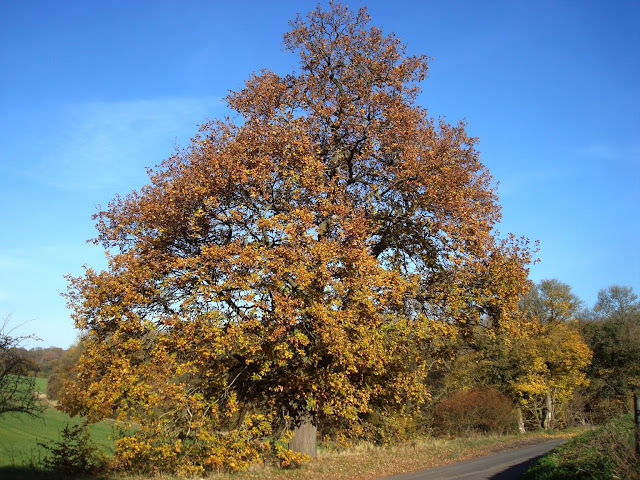 |
| Noctule bats over Upper Bush... |
I was pleased to be invited by an old former colleague of
mine to go bat watching in and around the woods to the west of Bush Valley in
Cuxton. Red Wood is part of the Halling and Trottiscliffe Escarpment SpecialSite of Scientific Interest, an area which covers most of the local Cuxton
woodland from Upper Bush, up either side of the valley and over the hill
through to Pilgrims Road in Halling.
The north end of Red Wood is an old chestnut coppice, but
Jeff told me there are some big old chestnut trees in there where the bats like
to roost during the day. This was news to me as I thought bats hid out in
churches, barns, crypts and people’s lofts, but apparently not.
In the early evening, Jeff took me to show where he had
found a colony of Noctule
bats roosting. How he how found it I
don’t know, but we picked our way through the coppices until we came to a
couple of great old chestnuts, just coming into leaf but cracked and worn and
in pretty poor shape. These were just the things for these bats, however, and
indeed you could see the guano all around and all over the branches of the
trees.
It was a bit too dark in the woods to take any decent pics
and as the bats were already active I didn’t want to use a flash. I thought
bats had an ultrasonic squeak but you could hear these chattering away as they
left the trees and shot out towards Upper Bush. There were probably 40-50 bats
emerging from the hollow trees as we watched. Jeff told me they were Britain’s
biggest bat but they look a little bit like slightly over-sized, rather chubby House
Martins, with a powerful, flappy flight.
Jeff had a gadget that allowed him to hear the ultrasonic
squeaks as well which is how he knew for definite that these were noctules,
although their appearance is fairly distinctive.
I tried to get a video but the light seemed too poor for my
camera (which was annoying as it still seemed quite light to me) so we made our
way eastwards out of the woods and past Upper Bush farm and up by Longbottom
Wood. You could see at least a dozen or so Noctules climbing up and then
swooping back down over and across the valley to grab whatever munchies they
could. We spent about half an hour or so watching them fly over Bush valley
until it got too dark to see anything.
Despite not being able to photograph one clearly, it was an
enjoyable experience. Jeff said that this was the largest colony of Noctules he
knew of, although they tend to disperse in the spring and summer to breed.
By now it was around 8.30 and as the moonless sky began to
darken, we headed off to the White Hart, well pleased with ourselves.





































